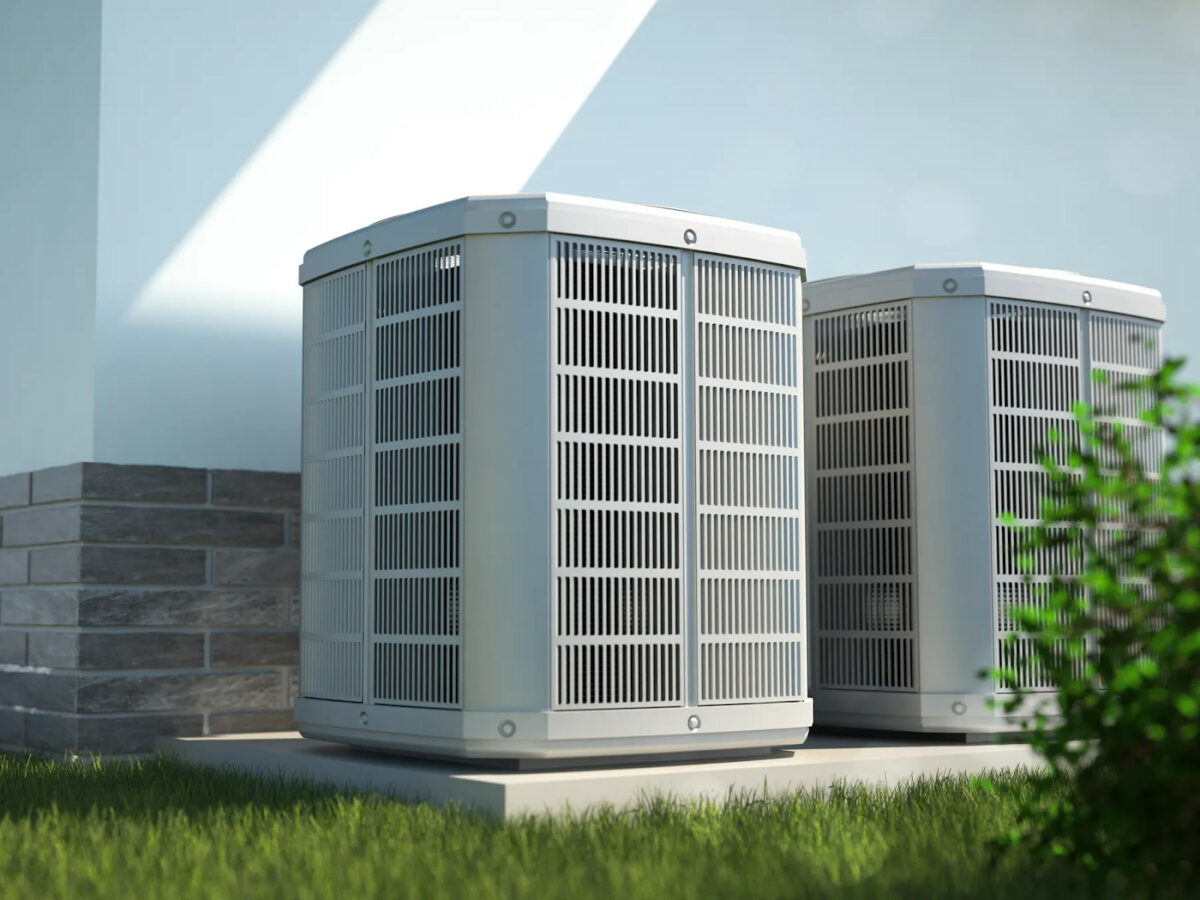Your HVAC unit has to work really hard already as it is. Particularly if you have dirty filters or flaws in your ductwork. If you live in a continental type of climate, the Midwest, or the Northeast, cold weather will add a whole other level of workload when it comes to caring for your outdoor HVAC unit. It may be part of an air conditioner or a heat pump. Covering the unit often seems like the best way to block snow, ice, and stray debris from piling up. But the answer is not that simple.

Some experts say a cover protects the unit; others warn it can trap moisture and lead to damage. Here’s a guide on when and how to cover your unit so that you follow the advice of both pros and manufacturers without any guesswork.
Understanding Outdoor HVAC Units
Outdoor HVAC units sit just outside your house. You’ve likely noticed those solid metal boxes by a wall or on a patio at some point or other before. They’re made to stave off rain, snow, dirt, and falling leaves. Still, not every outdoor unit works the same way. Another quite widespread type is mini-splits that are isolated to particular rooms.
Air conditioners spend most of their time cooling your home in the warm months and then rest when the winter comes. Because they’re idle half the year, they need less frequent check-ups during colder weather. Heat pumps run all year long, switching back and forth between heating and cooling. That constant work means they need HVAC repair and servicing more frequently to keep you cozy Winter and Summer long.
A bit of upkeep makes a big difference. Brush away the leaves, trim the plants nearby, and give the unit a gentle rinse to wash off dust. This gives it space to breathe without extra strain. These small steps keep your system running smoothly, quietly, and ready for any season.

Why You Should Cover Your AC Units
A cover helps keep leaves, pine needles, and random bits of mother nature from accumulating inside the unit. When spring comes, this junk won’t block airflow or mess with the parts when you start the system again. This matters more if your yard has lots of trees nearby.
In places with heavy winters, a cover also acts like a shield. Snow and ice can weigh down the unit over time, bending its thin metal fins or even cracking smaller pieces. A snug cover keeps things dry and safe. Just make sure to use something breathable so moisture doesn’t get trapped inside. A little effort now might save you from surprises later, and keep your AC humming smoothly when warmer days return.
Mistakes to Avoid When Covering Your AC Unit
Covering up isn’t all “sunshine and rainbows” though. Here are some problems to avoid.
- Heavy plastic or vinyl might keep out rain and snow, but it also traps water down underneath;
- That wet spot leads to rust and mold over time. This kind of damage can be worse than having no cover at all;
- A perfect hideout for mice, insects, and other critters looking for shelter. Once inside, they chew wires or build nests. Repairs can get expensive fast.
A simple fix is a breathable mesh or fabric cover so that moisture can’t build up. It keeps leaves and debris out while letting air flow. If you want an even easier trick, just place a piece of plywood on top and weigh it down with bricks. It blocks most junk but leaves the sides open for airflow. It’s all about balancing protection with letting the unit breathe.
Heat Pumps
Heat pumps work all year, even in the Winter. Covering them isn’t a good idea. Doing so can block the airflow they need to pull in outside air for heating. This might make them less efficient or even lead to damage over time.
Skip covers altogether. Instead, gently brush off snow from the top and sides to keep things running smoothly. This helps the system do its job without strain. The Department of Energy backs this up, explaining that covers can trap moisture or block airflow, making it harder for the pump to heat your space. Let it breathe, clear snow when needed, and avoid anything that restricts its natural operation.
Best Practices for Covering Your AC Unit
A breathable cover can help AC units in areas with heavy snow. Experts warn against covering heat pumps and say it’s better to keep them free of snow. Cover your central air conditioner units to shield them from ice and debris. At the same time, note that covers stop heat pumps from working properly. HVAC professionals are divided on how to approach this issue.
Some say covers trap moisture and invite pests, so regular maintenance is a safer choice. On the other hand, others stress that using breathable materials and adequate airflow are essential.
Before you tuck your AC away for the season, take a few simple steps to keep it safe and dry.
Choose the Right Cover

Start by choosing a cover made of breathable material so that air can move through and moisture won’t build up. Mesh or vented covers work best. Don’t use plastic or rubber covers since they trap damp air and harm the unit. Here’s a table of covers that you could consider, including the Covermates AC Cover with vents and adjustable hems. It fits snugly and keeps air flowing around the unit.
| Model | Best For | Key Features | Sizes Available | Warranty | Price Point |
| Sturdy Covers AC Defender | Mesh Cover | Mesh design, PVC coated, bungees for fit, protects from debris | 3 | 3 years | Reasonable |
| AmazonBasics Square | Large Cover | 34 x 34 inches, straps, reinforced seams, durable polyester | 1 | Not specified | Budget |
| Classic Accessories Ravenna Square | Vented Cover | Water resistant, drawstrings, vents, handles, 32 x 32 inches | 1 | Not specified | Not specified |
| Covermates AC Cover | Multiple Sizes | 14 sizes (24-40 inches wide), 300D polyester, vents, adjustable hem | 14 | 3 years | More expensive |
| Cosfly AC Cover | Affordable Cover | 600D polyester, waterproof inner layer, vents, drawstrings, 4 sizes | 4 | Not specified | Affordable |
Here’s how to navigate these tricky situations.
- Cover only when it helps: In places with mild winters, you often don’t need a cover. But if you get a lot of snow or falling leaves, a cover can help.
- Clean the unit first: Wipe away leaves, dirt, and other debris before you put on the cover so that nothing gets trapped inside.
- Secure the cover properly: Start by looping adjustable straps or heavy-duty bungee cords through the cover’s reinforced grommets and cinching them tight around the unit base. Fasten corner tabs or Velcro straps to anchor points so the cover won’t billow in gusts.
- Add hurricane or anchor straps from the cover to the concrete pad or mounting brackets for extra security. After storms or strong winds, recheck and retighten all fastenings to keep the cover firmly in place. Finally, tuck in any loose material to avoid wind pockets and distribute tension evenly across the cover surface.
- Remove the cover in spring: Take the cover off before you switch the AC back on in spring to prevent any damage.





Leave a Reply